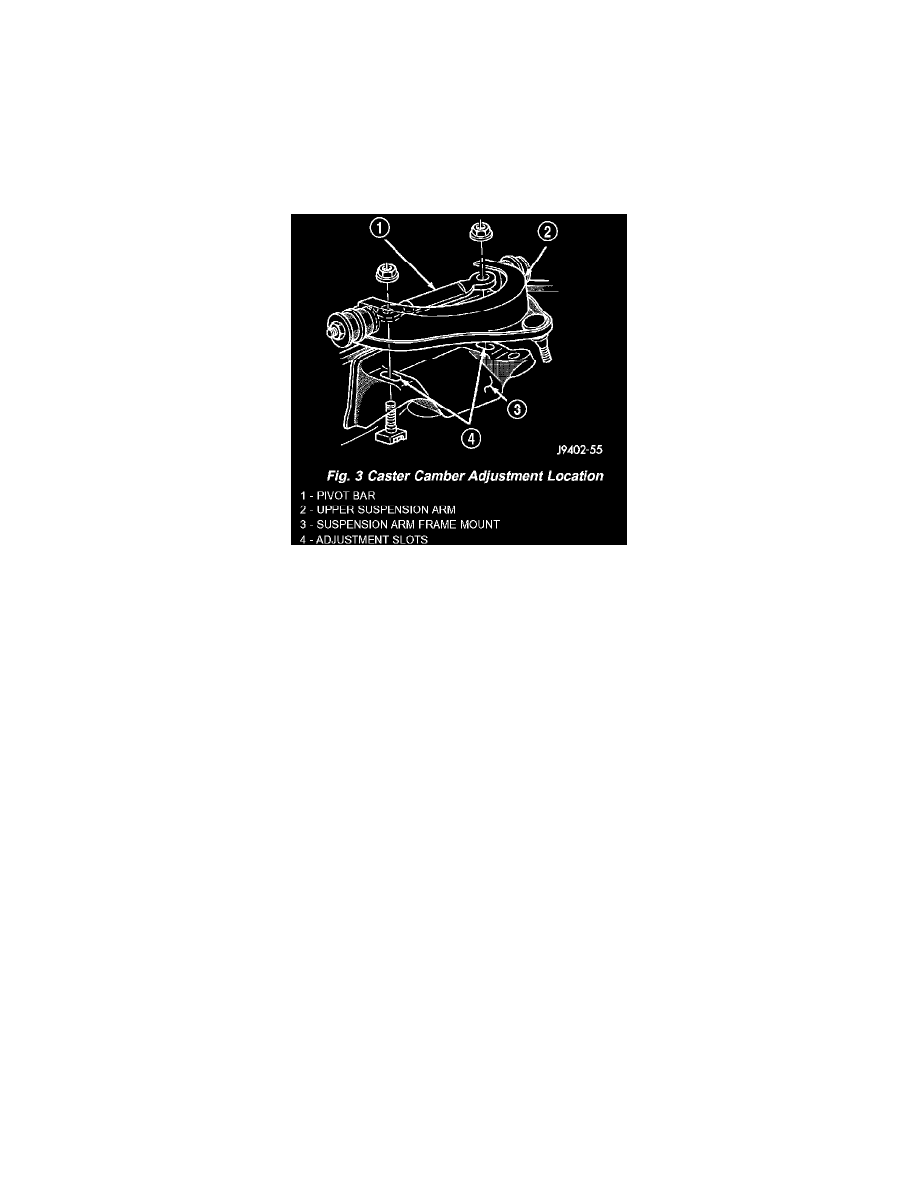RAM 2500 Truck 2WD L6-5.9L DSL Turbo VIN C (2002)

Alignment: Service and Repair
Wheel Alignment
Alignment Independent Front Suspension
STANDARD PROCEDURES - ALIGNMENT I.F.S.
Before each alignment reading the vehicle should be jounced (rear first, then front). Grasp each bumper at the center and jounce the vehicle up and
down several times. Always release the bumper in the down position. Set the front end alignment to specifications while the vehicle is in its
NORMALLY LOADED CONDITION.
Camber and caster angle adjustments involve changing the position of the upper suspension arm pivot bar. Refer to the Alignment Specification Chart
for the correct setting.
CASTER: Move the rear position of the pivot bar in or out. This will change the caster angle significantly and camber angle only slightly. To retain
camber move the forward pivot very slightly in the opposite direction.
NOTE: For example, to increase a positive caster angle, move the rear position of the pivot bar inward (toward the engine). Move the front of pivot
bar outward (away from the engine) slightly until the original camber angle is obtained.
CAMBER: Move the forward position of the pivot bar in or out. This will change the camber angle significantly and caster angle only slightly. The
camber angle should be adjusted as close as possible to the preferred service specification. After adjustment is made tighten pivot bar nuts to
specifications.
TOE POSITION: The wheel toe position adjustment should be the final adjustment.
1. Start the engine and turn wheels both ways before straightening the wheels. Center and secure the steering wheel and turn off engine.
2. Loosen the tie rod adjustment sleeve clamp bolts/nuts.
NOTE: Each front wheel should be adjusted for one-half of the total toe position specification. This will ensure the steering wheel will be
centered when the wheels are positioned straight-ahead.
3. Adjust the wheel toe position by turning the tie rod adjustment sleeves as necessary.
Alignment Link/Coil Suspension
STANDARD PROCEDURE - ALIGNMENT LINK/COIL SUSPENSION
Before each alignment reading the vehicle should be jounced (rear first, then front). Grasp each bumper at the center and jounce the vehicle up and
down several times. Always release the bumper in the down position. Set the front end alignment to specifications while the vehicle is in its
NORMALLY LOADED CONDITION.
CAMBER: The wheel camber angle is preset and is not adjustable.
CASTER: Check the caster of the front axle for correct angle. Be sure the axle is not bent or twisted.
Road test the vehicle and make left and right turn. Observe the steering wheel return-to-center position. Low caster will cause poor steering wheel
returnability.
